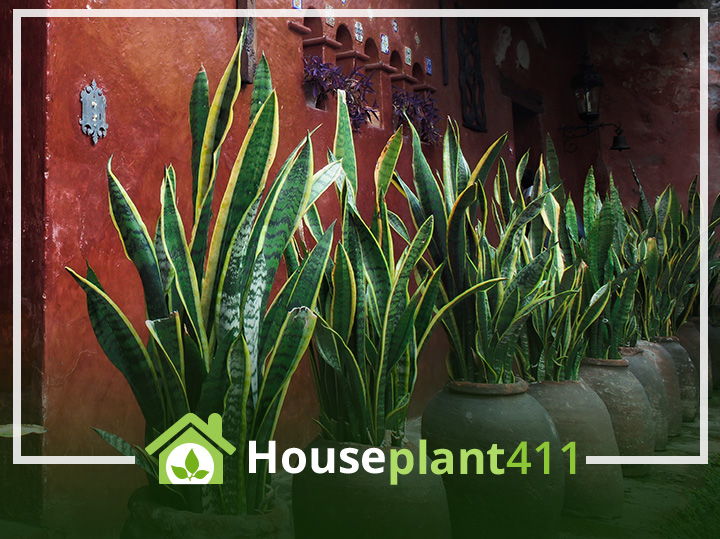The snake plant is among the top-ranked, easy-to-care houseplants for beginners. These plants have the curious nickname Mother-in-Law’s Tongue because of their pointed and structured leaves. Snake plants grow well if taken care of correctly.
Here, we’ll go through every propagation technique in-depth and provide options for growing your favorite indoor plants. Let’s begin with snake plant propagation!
Why Snake Plant Needs Minimal Maintenance
The snake plant is tolerant to varying moisture levels and sunlight exposure, but it’s particular about how much water it receives. The only natural killer of snake plants is over-watering. There aren’t many insect or disease issues, and it does well in compact containers with dense rhizomes. Although fertilizers are not required, you may give the plant extra love by using a half-diluted houseplant feed every month while it’s in the growth phase.
These plants beautify the room while purifying the air. Consider sharing snake plants with others, as it shows your friends and family how much you care.
Snake Plant Propagation Techniques
Snake plants are simple to grow if you know how. Snake plants may not enjoy staying submerged in water, but propagating them in water is one of the best approaches.
Another approach is propagating with cuttings. Although you may grow the snake plant using cuttings, dividing it is the quickest way to generate new plants.
Rhizomes, which group together and proliferate as the plants develop, provide the plant’s initial growth. This technique is identical to the one used while working with older blooms.
Here are some snake plant propagation options for you to explore.
Propagating in Water
All you need is leaf cutting and a container with fresh water for propagating plants in water. Pick a young, vigorous leaf from a mature plant, and slice it off with clean, sharpened clippers.
The chopped leaf has to be around seven to eight inches long. Drop the sliced leaf tip in a container or jar with around four inches of water. Every week, rinse the jar, replace the water, and place it in a well-lit area.
Roots will grow at the cutting’s tip in roughly six to eight weeks. Once the cutting has developed visible roots, transplant it to a pot with soil mix for houseplants.
Propagating in Soil
This procedure is nearly identical to succulent propagation. Slice a fresh leaf from the snake plant growing well close to the root. Then, wait for 3 to 6 days for the wound to recover and dry out.
Transplant the cutting in perlite-containing, well-drained soil mix that offers adequate aeration. Root hormone is optional. Maintain shade and give it plenty of water but ensure adequate drainage.
Avoid letting the soil become overly moist or dry. In moisture, cuttings might succumb to root decay. Watering the plant every week is more than enough. Before you water your snake plant, check the soil; it should be completely dry on the surface.
Soon, the leaves will root in a few weeks and develop pups that will grow into a plant.
Propagating With Cuttings
The cutting method is not different from the water technique, but it saves you a step. Place the cut side of the leaf in a watertight container with moderately moistened soil after letting the sliced callus heal for 24 hours.
Propagating With Divisions
Snake plants grow and expand underground through Rhizomes The energy needed to develop leaves and stems is stored in them. After removing the plant from the container, slice the bottom into separate pieces using a craft knife or pair of sharp clippers.
If the plant is quite old and includes a dense root system, it’s best to divide it into sections carefully. Generally, each new plant should have at least two or four rhizomes and one robust leaf. Every new segment should be planted in a fresh soil mix.

How to Look After Snake Plants
After successfully propagating the plants, you should take some crucial aftercare steps. Doing this can increase the likelihood that your freshly produced plant will thrive. Let’s look at some essential care tips for snake plants.
Light
Snake plants can tolerate essentially any degree of illumination and are exceedingly laid-back. Plants that grow well indoors enjoy bright morning sunlight paired with brilliant ambient lighting, but they can manage low-light situations just fine.
If they’re slowly exposed to such settings, snake plants may also thrive in bright sunlight. Due to the succulent characteristics of these plants, they will often develop more quickly when exposed to a couple of hours of intense sunlight.
Temperature
Since they are native to the tropical region, snake plants thrive in hot and moist climates. Temperatures under 40F are not safe for snake plants. Unlike many houseplants, they can withstand cold climates. Yet, they thrive at warmer, steady temperatures of about 80°F all year.
Water
Snake plants need minimal care, even in how often they need to be watered. Snake plants are succulents and store significant water in their thick, luscious leaves. Since their natural environments have drier soil, they cannot tolerate excessive moisture.
Wait to water the snake plant until the topsoil has completely dried out. Pay extra attention to plants growing indoors where sunlight and chances of evaporation are minimal.
Snake plants do well without frequent irrigation during winters. The leaves will be supple and healthy if it’s regularly watered as the topsoil dries out.

The Take-Away
Snake plants are relatively low maintenance and easy to look after. They are likely to grow more successfully when left independently instead of being fretted about.
If done appropriately, snake plant propagation is as simple as growing a pothos plant. You can choose between propagating in soil or water or through leaf cuttings or the division method. They’re not picky with nutrient requirements and can do well in well-drained soil.

